
Prehistoric creatures weren’t just different versions of the animals we know today; they were often terrifyingly larger. From mega-sized sharks to humongous insects, these ancestors make today’s wildlife look tame by comparison.
1. Megalodon: The Apex Mega-Shark

Megalodon is the stuff of nightmares—imagine a shark up to 60 feet long, roughly three times the size of a great white shark. This apex predator, with jaws so powerful they could crush a whale’s skull, ruled the oceans over 3 million years ago. Fossils suggest its teeth alone measured 7 inches, making it capable of delivering one of the most powerful bites in history. Thankfully, Megalodon’s reign ended long ago, leaving us with the far smaller (though still formidable) sharks of today.
2. Titanoboa: The Giant Snake of Doom

If you thought an anaconda was scary, Titanoboa would truly horrify you. This ancient snake, reaching lengths of up to 40 feet, slithered through the hot, swampy rainforests of what is now Colombia about 60 million years ago. Weighing in at around 2,500 pounds, Titanoboa could easily crush prey under its immense body weight. It is the largest snake ever known, and compared to today’s pythons and boas, was a true giant.
3. Arthropleura: The Monster Millipede
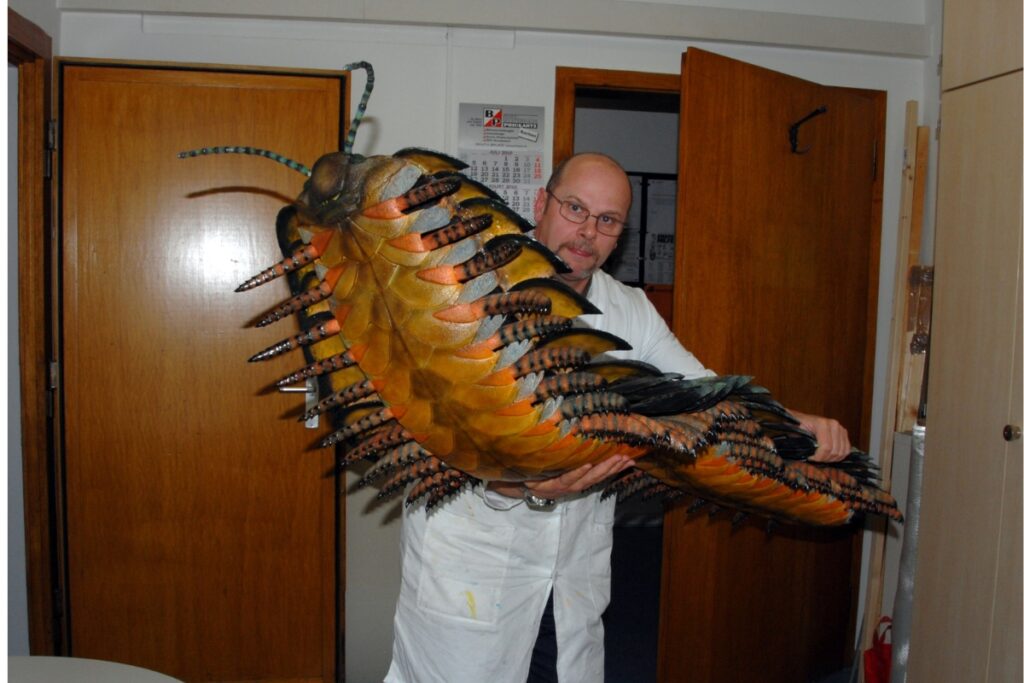
Modern millipedes are tiny crawlers in comparison to Arthropleura, a colossal millipede that grew over 8 feet long. This giant arthropod roamed North America around 300 million years ago. Though it was likely herbivorous, its sheer size would have intimated any small predator nearby. Arthropleura is the largest ever land invertebrate we know of, and while it probably didn’t attack animals, it likely dominated its ecosystem with its intimidating presence.
4. Megatherium: The Giant Sloth

Megatherium, also known as the giant ground sloth, was a gentle herbivore that could reach up to 20 feet in length and weigh over 4 tons. Roaming the forests of South America around 10,000 years ago, this sloth was nothing like the small, slow-moving creatures we know today. With sharp claws and a powerful build, it was well-equipped to defend itself against predators, proving that even sloths once had a larger, more formidable presence on our planet.
5. Paraceratherium: The Tallest Rhino
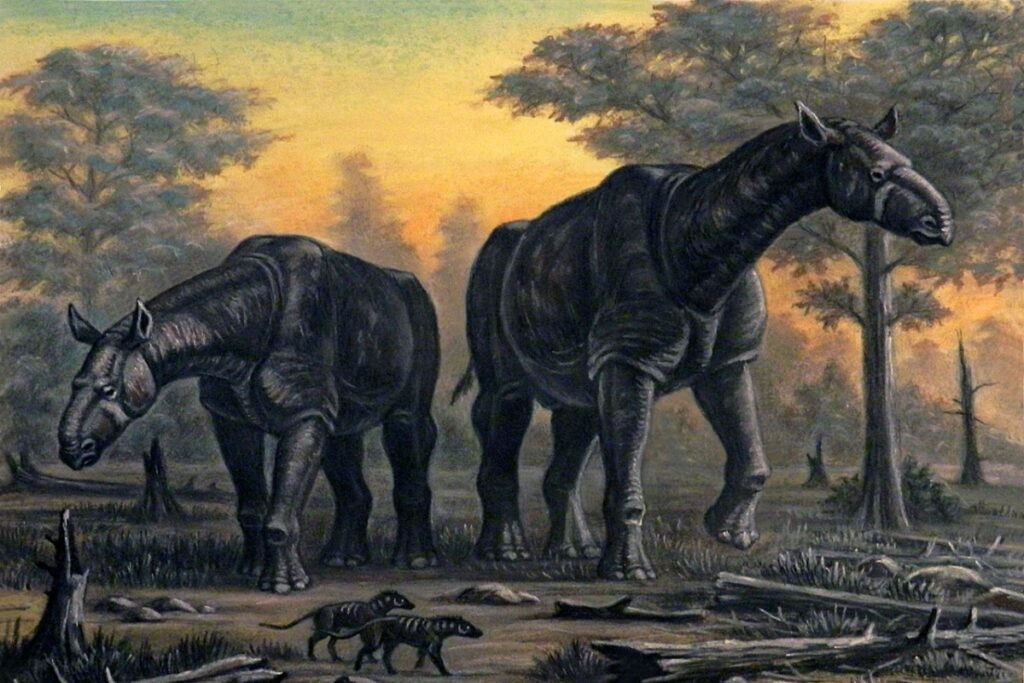
Paraceratherium, also known as the giant rhino, could reach heights of up to 18 feet at the shoulder, making it taller than even the largest giraffes today. This massive herbivore lived around 23 million years ago in Asia and was likely the largest land mammal to ever exist. Despite its rhino classification, it had no horn, instead possessing a long neck to reach high vegetation. Imagine a rhino bigger than an elephant—it’s an incredible thought!
6. Deinosuchus: The Terrible Crocodile

Living up to its name, meaning “terrible crocodile,” Deinosuchus could reach up to 35 feet in length. Roaming North American rivers around 75 million years ago, Deinosuchus would have looked like an alligator but on a much grander scale. Its massive jaws and sharp teeth allowed it to hunt even large dinosaurs, securing it a spot among the most fearsome predators of its time. Even today’s saltwater crocodiles, the largest modern reptiles, pale in comparison.
7. Jaekelopterus: The King of Sea Scorpions
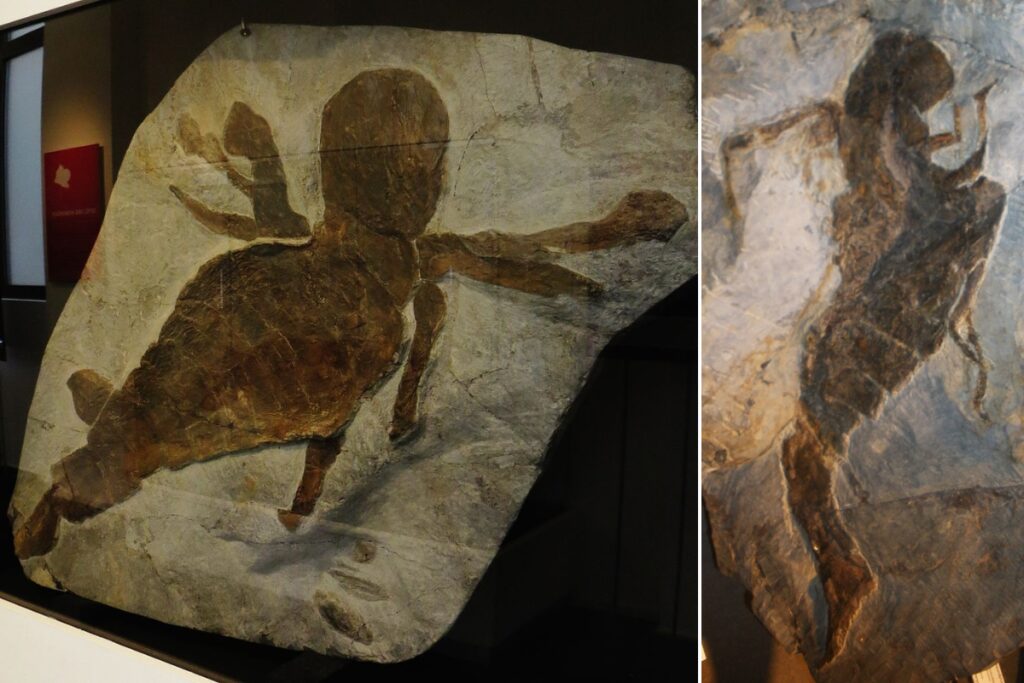
This ancient sea scorpion reached over 8 feet in length, making it one of the largest arthropods ever to exist. Jaekelopterus lived approximately 390 million years ago, preying on fish and other marine creatures with its powerful claws. An oversized, armored scorpion prowling ancient oceans is no ordinary sea creature. Thankfully, its colossal kind has long since disappeared, leaving today’s seas free of such daunting predators.
8. Megalania: The Colossal Komodo
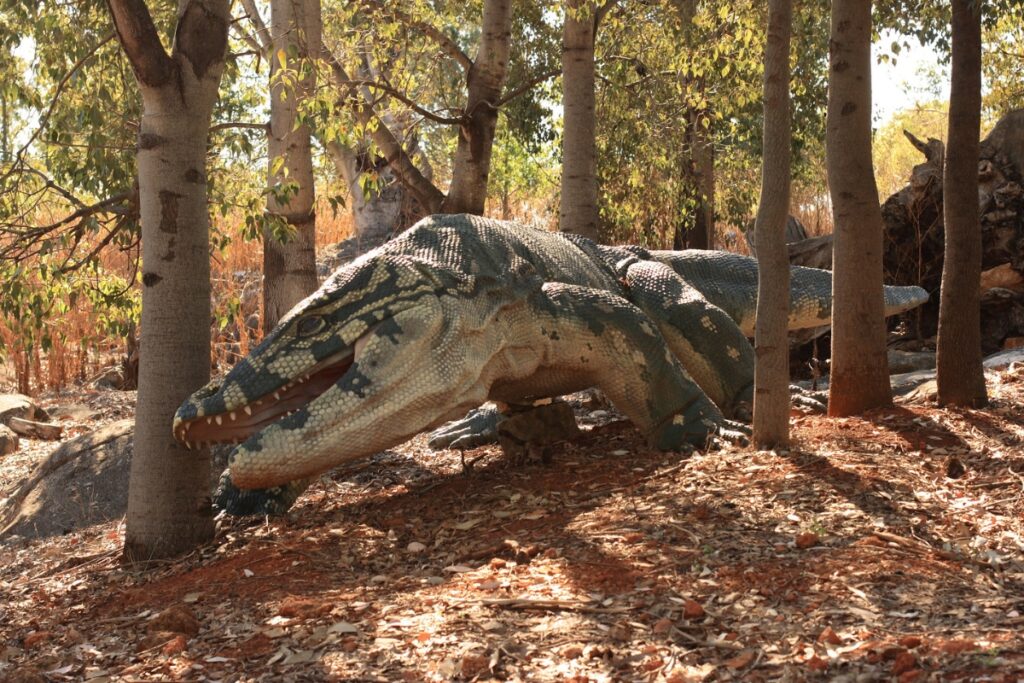
Megalania, an enormous relative of the Komodo dragon, roamed ancient Australia and could grow up to 23 feet long. This gigantic lizard had serrated teeth and a powerful bite, making it a top predator around 50,000 years ago. Weighing nearly a ton, Megalania would have been capable of taking down large mammals, including prehistoric humans. The modern Komodo dragon is a remarkable hunter in its own right, but Megalania was on another level of power.
9. Phorusrhacidae: The Terror Birds

Known as the “terror birds,” Phorusrhacidae were massive, flightless birds that stood up to 10 feet tall and lived in South America around 60 million years ago. With hooked beaks and a knack for swift running, they could chase down and dispatch prey efficiently. Their powerful beaks were built to tear flesh, making them formidable predators in their era. While the modern ostrich is a harmless descendant, the terror bird’s presence would have been anything but gentle.
10. Glyptodon: The Armored Armadillo
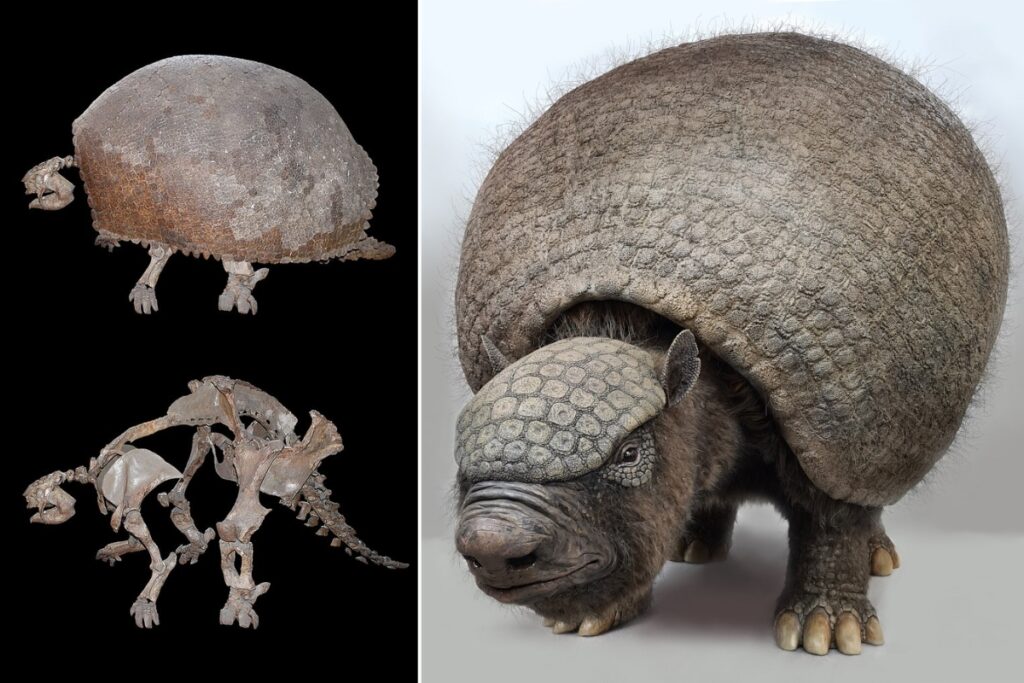
Glyptodon, a distant relative of the armadillo, looked somewhat like a giant, armored tank. Weighing up to a ton and stretching about 10 feet long, this creature had a tough, domed shell that could ward off predators. Glyptodon lived in South America during the last Ice Age, sharing its habitat with early humans. While it was herbivorous, its size and armor would have made it a challenge for even the most determined predator.







